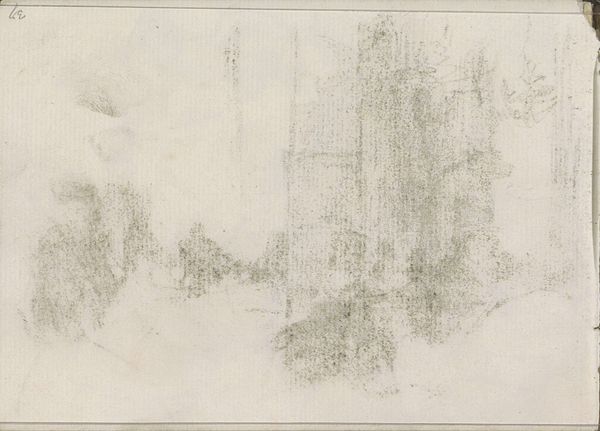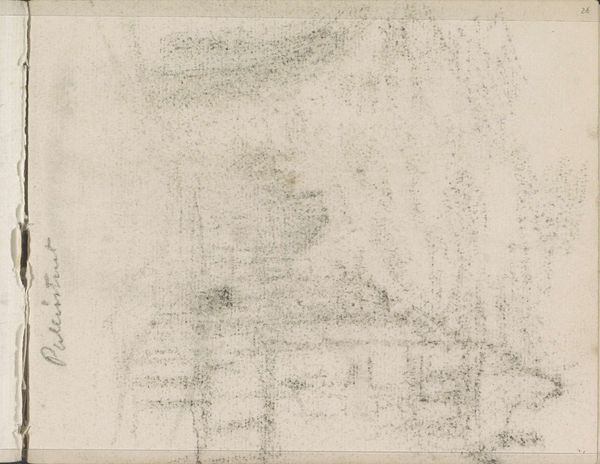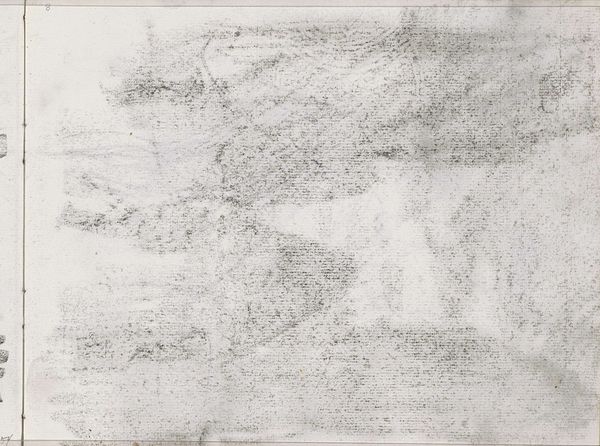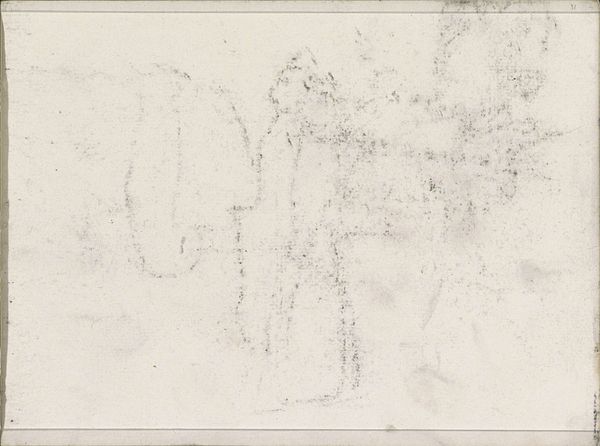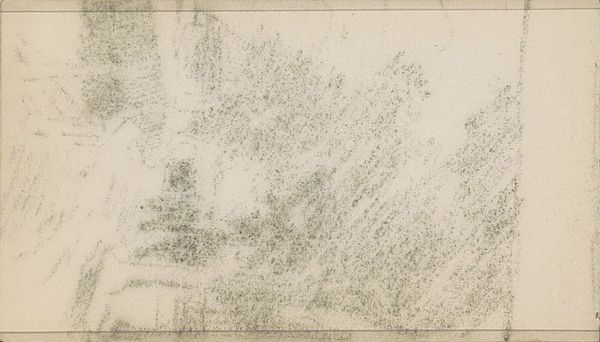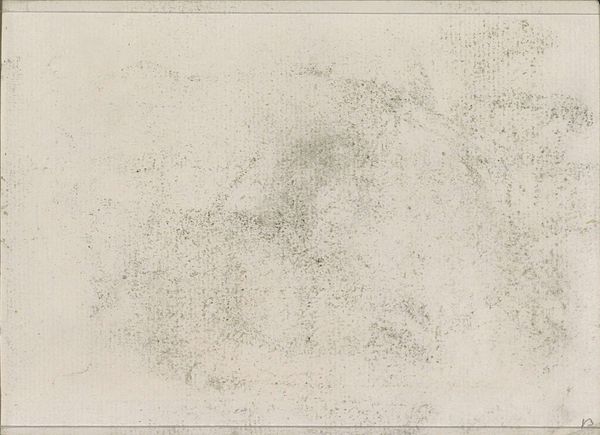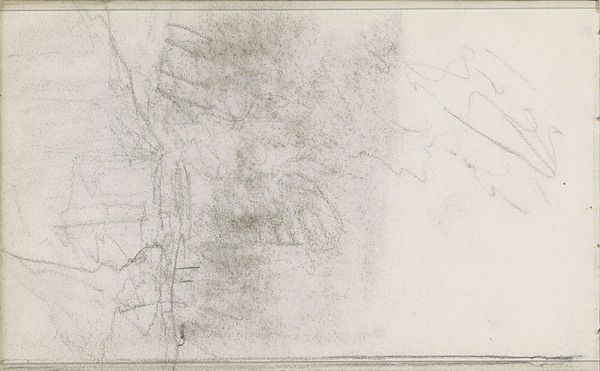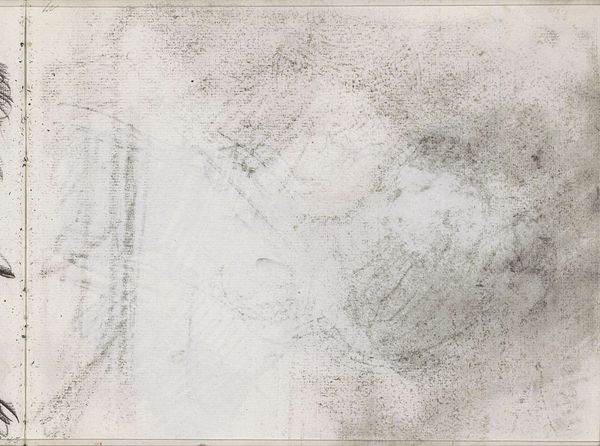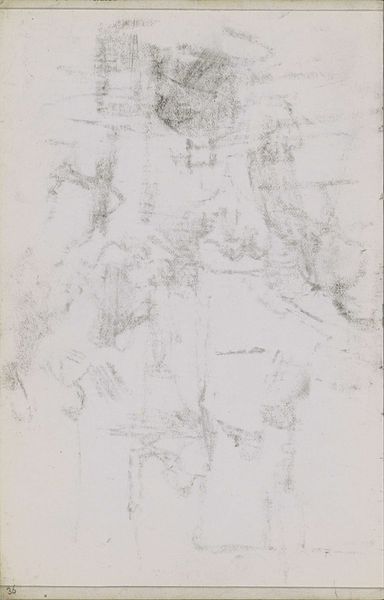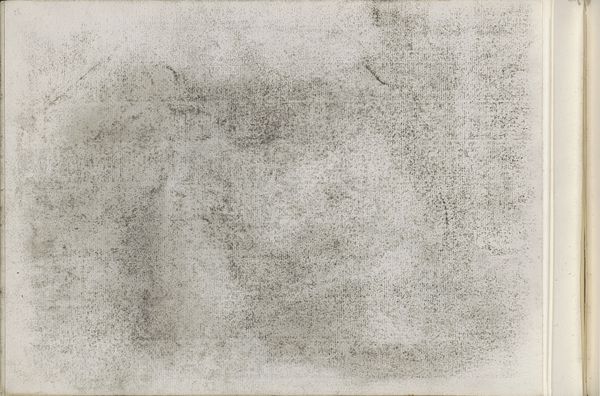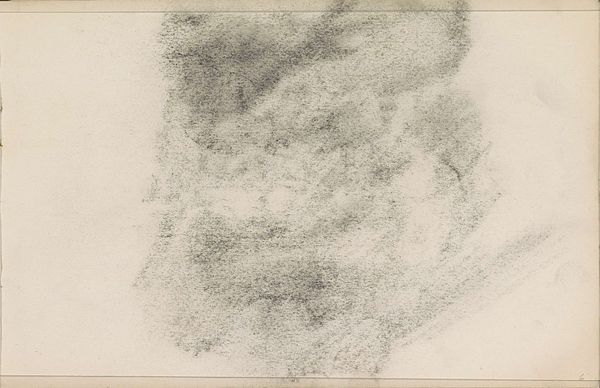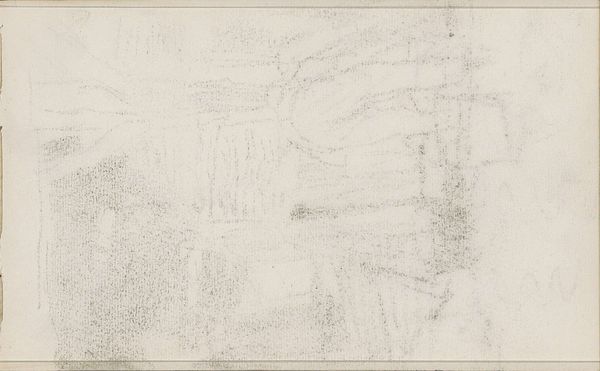
drawing, graphite
#
pencil drawn
#
drawing
#
amateur sketch
#
light pencil work
#
pencil sketch
#
sketched
#
incomplete sketchy
#
hand drawn type
#
detailed observational sketch
#
rough sketch
#
abstraction
#
graphite
#
pencil work
#
modernism
Copyright: Rijks Museum: Open Domain
Curator: Welcome. Here we have a piece titled "Abklatsch van de krijttekening op blad 18 recto" a work created with graphite, attributed to Isaac Israels sometime between 1875 and 1934. It's currently held in the Rijksmuseum collection. Editor: It's striking, even in its understatement. A wispy cloud of gray on white. I find myself drawn to the textured application of the graphite; it's quite subtle but engaging. Curator: Indeed. While we see "abstraction" noted in our records, the mark-making seems to also reveal much about the art education models during that period— where quick studies and capturing likeness were part of mainstream approaches of rendering figures or objects, but also thinking about abstraction. How does that graphite application tie into that abstraction for you? Editor: Precisely that tension interests me! It appears like a rough sketch—incomplete and momentary. Perhaps a figure suggested and then dissolved. Curator: Israels’ work often captured transient moments. The rough nature underscores a modern sensibility that celebrated impressions over meticulous representation, resonating with social changes. I find it curious how a traditional technique of sketching here represents something much more revolutionary, how ideas around form shift, and where is art heading? Editor: Absolutely. And look at the economy of the lines! Just a few strokes to hint at volume, light, and depth. Curator: His involvement in various artists' societies and movements also informed his progressive style that helped shape the Netherlands’ view on artistic and cultural identity. Editor: The eye animates the void to find a suggestion of reality. An unfinished, somewhat erased quality, as you suggested with the educational approach, but what kind of statement does it convey about time and memory? Curator: Perhaps the value lies in that very ephemerality, mirroring modern life where experiences and landscapes rapidly change and disappear in this global context. A moment frozen in time. Editor: And in that gesture, it prompts the viewer to participate, to fill in the blanks, doesn’t it? It is a suggestive aesthetic that echoes other unfinished work. Curator: Right. A piece that pushes viewers to contemplate both art’s role and reflect about contemporary existence. Editor: Exactly, it certainly provokes reflection on its simplicity—and on what’s left unseen.
Comments
No comments
Be the first to comment and join the conversation on the ultimate creative platform.
